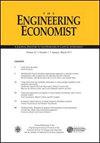Crypto-assets portfolio optimization under the omega measure
IF 1.2
4区 经济学
Q4 BUSINESS
引用次数: 12
Abstract
Abstract Crypto-currencies, or crypto-assets, represent a new class of investment assets. The traditional portfolio analysis approach of Markowitz is not appropriate for use with portfolios containing crypto-assets, as the model requires that the investor have a quadratic utility function or that the returns be normally distributed, which isn’t the case for crypto-assets. We develop a portfolio optimization model based on the Omega measure which is more comprehensive than the Markowitz model, and apply this to four crypto-asset investment portfolios by means of a numerical application. The results indicate that these portfolios should favor traditional market assets over crypto-assets. In the case of portfolios formed only by crypto-assets, there is no clear preference in favor of any crypto-asset in particular.度量下的加密资产组合优化
加密货币或加密资产代表了一种新的投资资产类别。传统的Markowitz投资组合分析方法不适合用于包含加密资产的投资组合,因为该模型要求投资者具有二次效用函数或回报为正态分布,而加密资产的情况并非如此。我们建立了一个基于Omega测度的比Markowitz模型更全面的投资组合优化模型,并通过数值应用将其应用于四个加密资产投资组合。结果表明,这些投资组合应该更青睐传统市场资产,而不是加密资产。在仅由加密资产组成的投资组合的情况下,没有明确的偏好,特别是支持任何加密资产。
本文章由计算机程序翻译,如有差异,请以英文原文为准。
求助全文
约1分钟内获得全文
求助全文
来源期刊

Engineering Economist
ENGINEERING, INDUSTRIAL-OPERATIONS RESEARCH & MANAGEMENT SCIENCE
CiteScore
2.00
自引率
0.00%
发文量
14
审稿时长
>12 weeks
期刊介绍:
The Engineering Economist is a refereed journal published jointly by the Engineering Economy Division of the American Society of Engineering Education (ASEE) and the Institute of Industrial and Systems Engineers (IISE). The journal publishes articles, case studies, surveys, and book and software reviews that represent original research, current practice, and teaching involving problems of capital investment.
The journal seeks submissions in a number of areas, including, but not limited to: capital investment analysis, financial risk management, cost estimation and accounting, cost of capital, design economics, economic decision analysis, engineering economy education, research and development, and the analysis of public policy when it is relevant to the economic investment decisions made by engineers and technology managers.
 求助内容:
求助内容: 应助结果提醒方式:
应助结果提醒方式:


